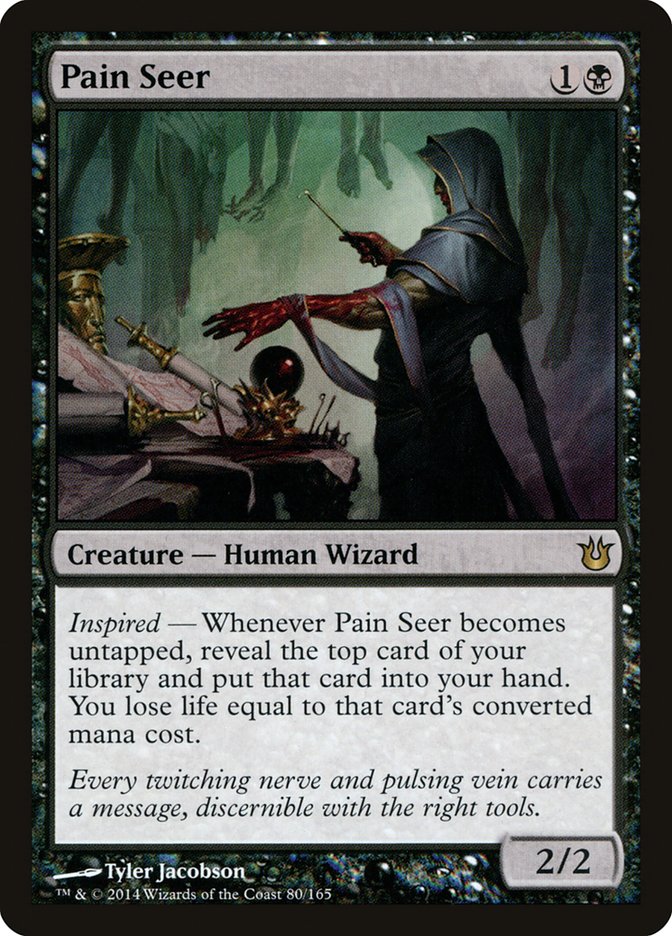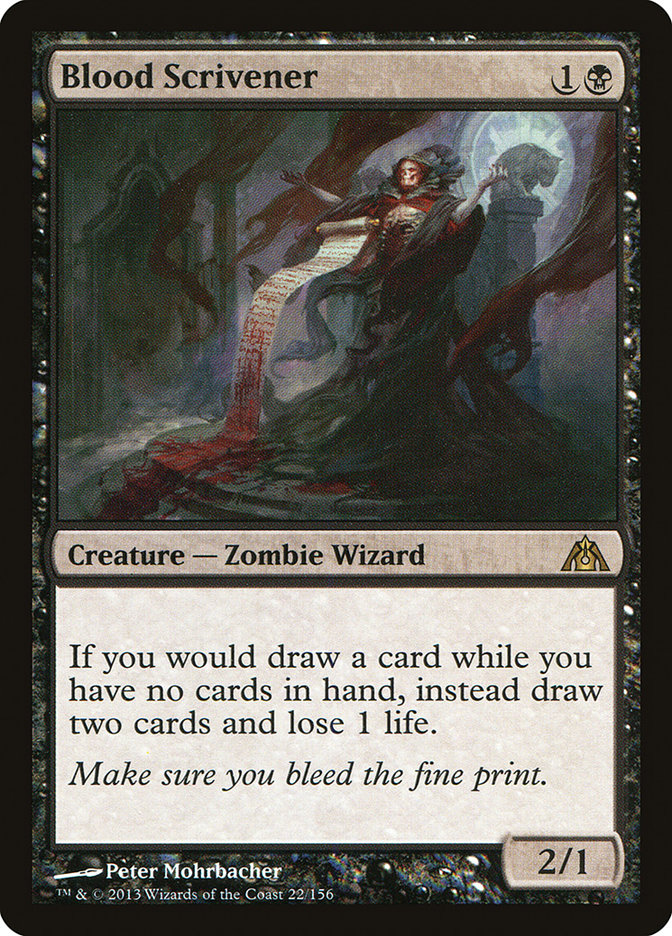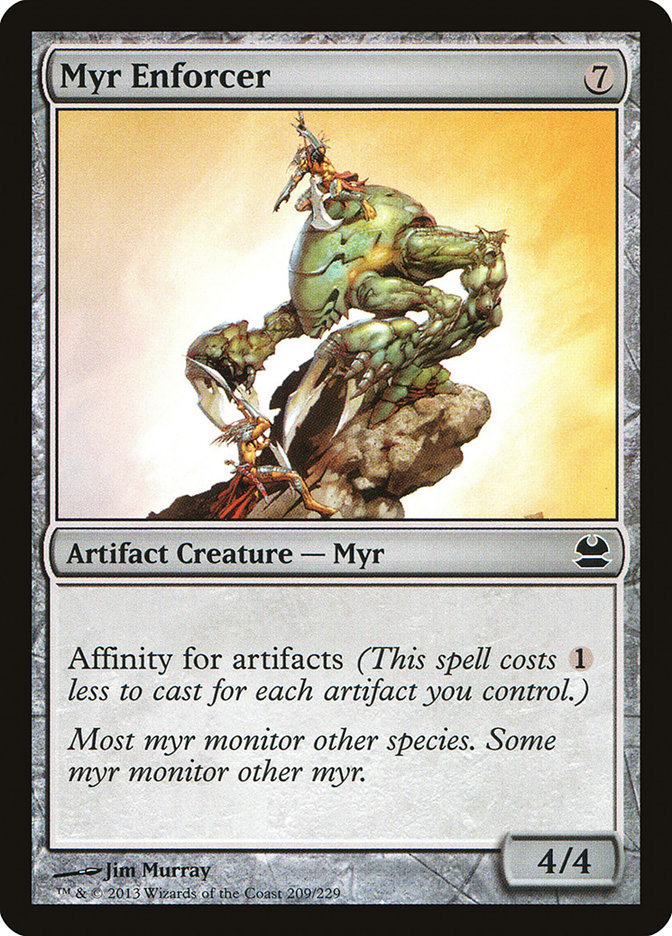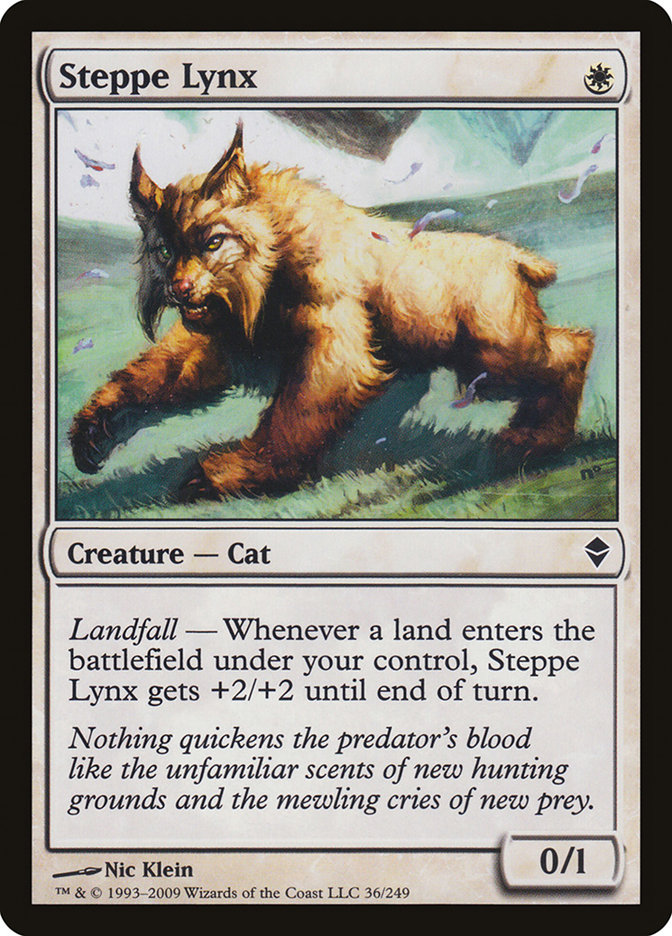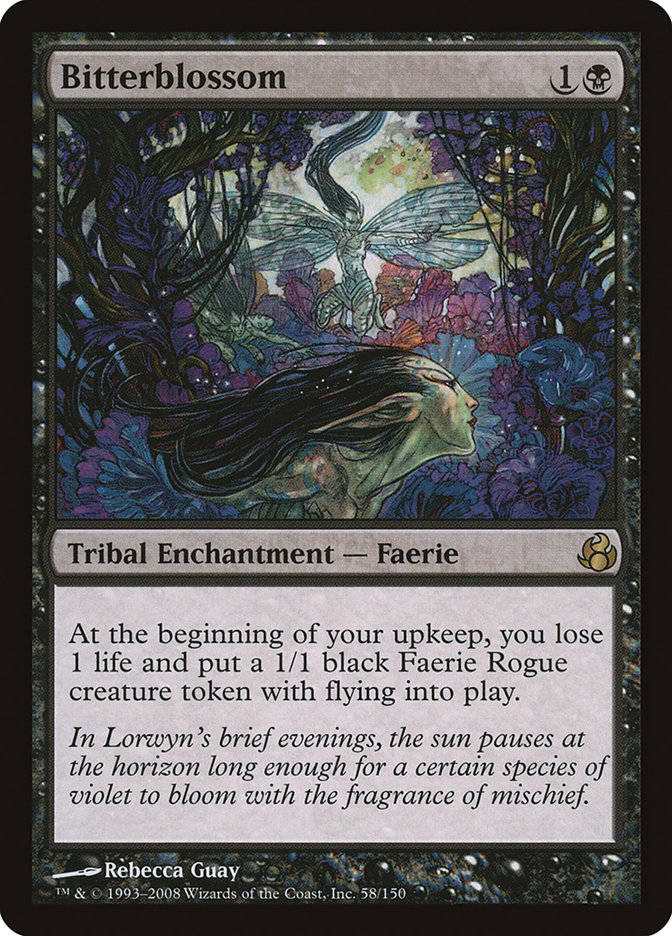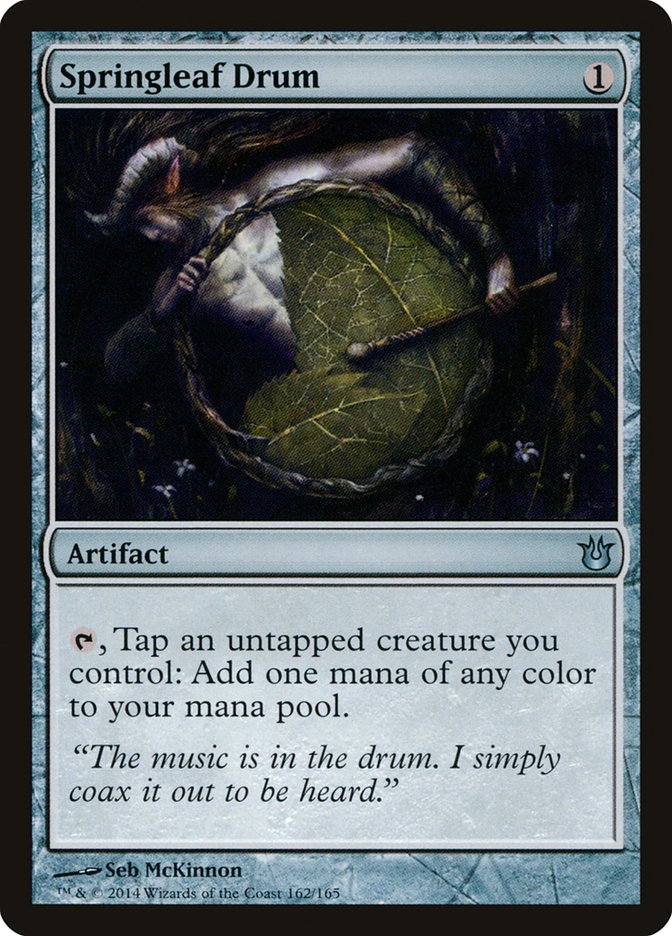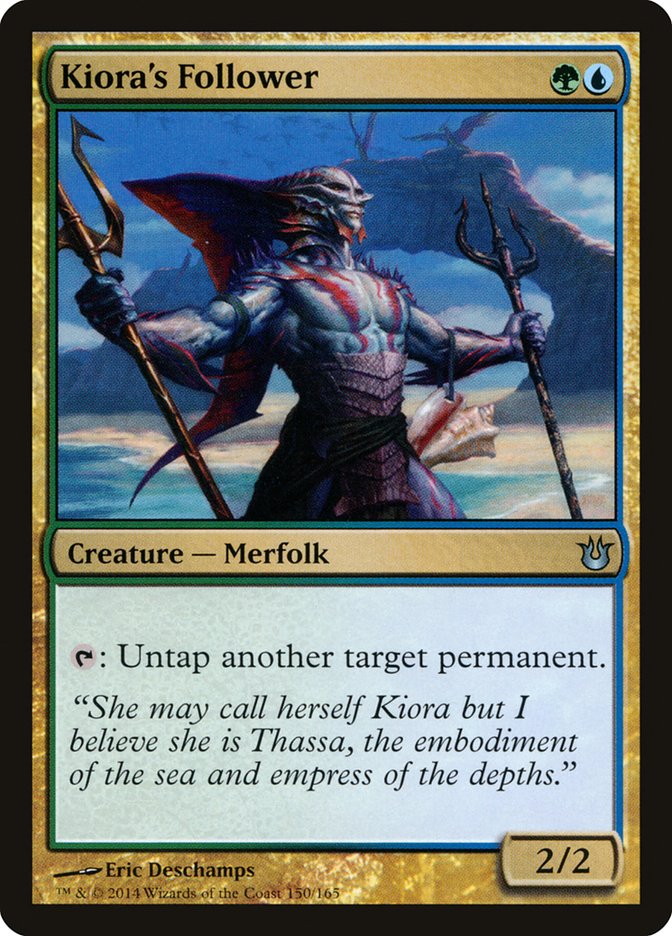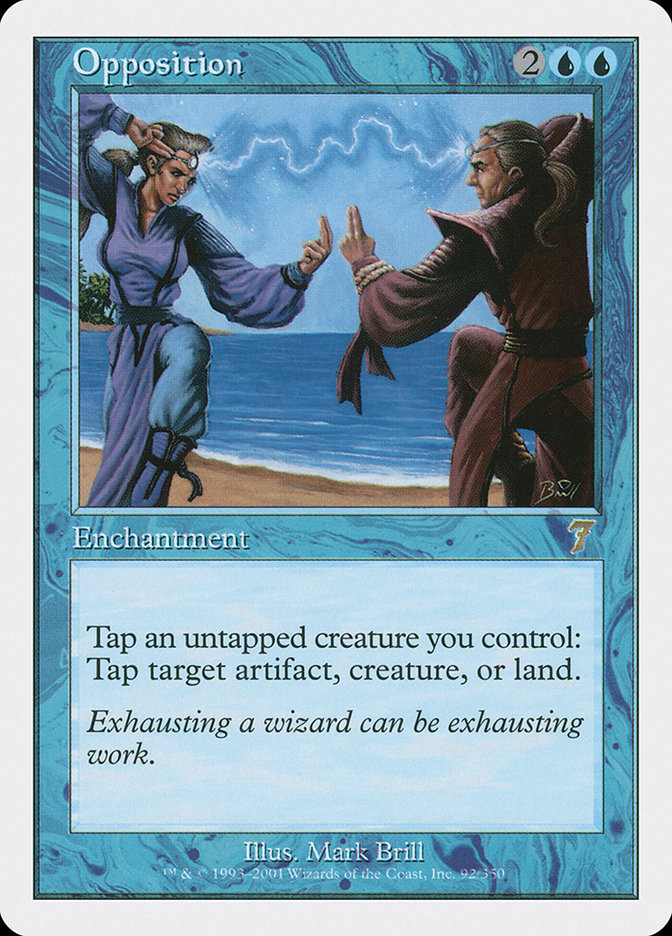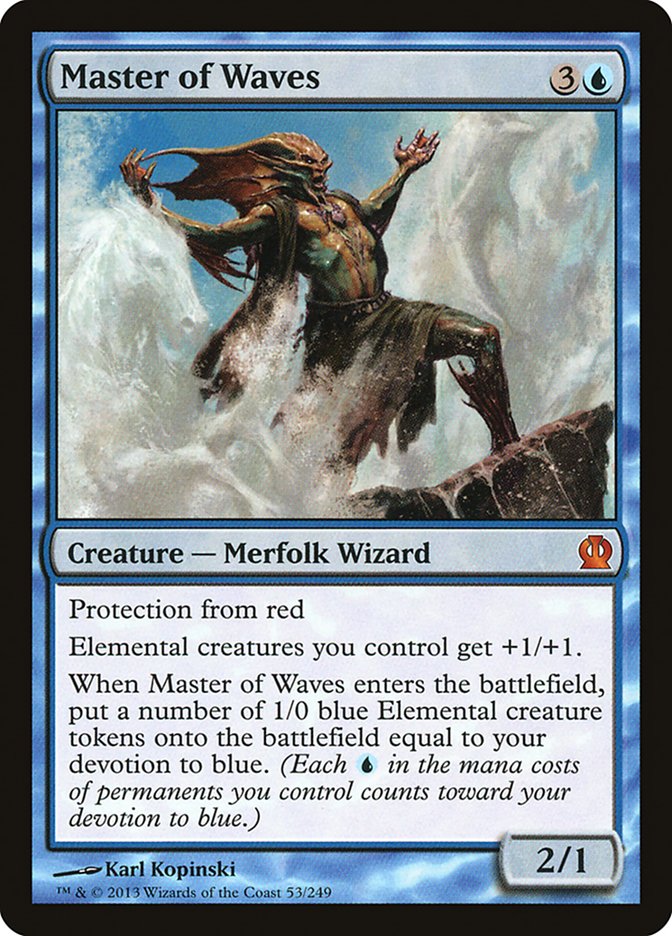Spring training is always a great time of year. After some time spent away from the game, living it up for the holidays, and eating like a fiend, the players all get back together with the promise of a brand-new season. Spring training and the season that follows it is the beginning of a blank slate where almost anything is possible. Your favorite teams are still here, but there are always new players ready to rise through the ranks; you can never be sure who is about to have a breakout year or who is going to regress and fade into obscurity.
The time before a new set comes out always feels just like spring training to me. Will your favorite team, U/W Control, get a new third baseman? Will Tarmogoyf get banned for steroid use? Will Duskmantle Seer ever make it to the majors? Who’s this new black two-drop, and can he turn my team into a contender?
Funny you should ask . . .
This card has only been public for a few days and has already gotten a lot of both positive and negative press. Let’s just get a few things out of the way first.
Pain Seer is not Dark Confident. Dark Confidant is one of the most powerful creatures ever printed and a staple in every single tournament format. Dark Confidant requires almost no work beyond simply playing it, wanting the game to go on at least a few more turns, and playing a low curve in your deck (something that is easier to do in older formats and already desirable). Comparing a new creature to Dark Confidant is like comparing a new planeswalker to Jace, the Mind Sculptor—not measuring up doesn’t mean it’s not playable. However, with that in mind, it is pretty clear to me that this card is only going to be playable in formats that do not have Dark Confidant available to them. This means we are only really looking at Standard.
Pain Seer is also not Blood Scrivener. I’m not going to lie—I was pretty high on Blood Scrivener when it came out. I didn’t think it was amazing, but it seemed like a solid role player in an anemic black two-drop slot. It is also a Zombie, which was relevant at the time. Aside from Standard, I was also excited to see it play out in my Cube, as aggressive black two-drops were quite the commodity and building a deck with a low enough curve to get hellbent on turn 3 or 4 was a real possibility.
As we clearly know now, Blood Scrivener horribly underperformed. Being hellbent was much more difficult than it seemed, and the payoff for putting yourself in such a drastically debilitating position was definitely not worth actually being in such a drastically debilitating position. I held on for quite a while in my Cube until at some point somebody eventually spoke up and was like "has anyone here ever actually drawn a card off of Blood Scrivener?" The silence that followed sealed the poor little Zombie’s fate.
Pain Seer clearly falls somewhere between these two extremes, and when you fall somewhere between "best black creature ever printed" and "just fell short of making the cut," you need to be looked at more closely.
As far as base stats go, Pain Seer gets a nice little upgrade from both prior cards on the backside, and if Lil Wayne has taught me anything, it’s that "it ain’t trickin’ if you got it" . . . err . . . never mind. This is definitely a slight bonus, as he can attack into a turn 2 Frostburn Weird or other random 1/1s like Elvish Mystic. He is also a Human, which is fairly relevant with Xathrid Necromancer in the format. While his mana cost of one black and one colorless makes him playable in all sorts of two- and three-color decks, it is definitely conceivable that he might have been better off costing two black for devotion purposes; however, this is neither here nor there.
Of course, the most important issue with Pain Seer is figuring out if we can actually trigger this guy.
Let’s look at what Pain Seer asks of us.
1. A Low Curve: Similar to Dark Confidant, Pain Seer is going to want us to play a lower curve. We plan on triggering this guy as much as possible and certainly don’t want to be losing huge chunks of life.
2. Removal: Pain Seer is a modest 2/2 with no combat abilities or evasion. If something is going to get in his way, we are going to want to blow it up. This is not an awful downside, as killing your opponent’s creatures is often going to be part of your plan anyway.
2b. Enhancement: If we aren’t going to be blowing stuff up, we are going to want to find some other way to get his hands dirty; this could be Equipment, pump effects, Auras, or something else entirely.
3. More Creatures: Like Dark Confidant and other fragile utility creatures, Pain Seer is going to have a target on his head. If Pain Seer is the only or one of a few creatures in our deck, we are going to have a hard time keeping him alive. (This of course can also be turned on its head—much like control and combo decks sometimes side Dark Confidant in against decks with no removal, Pain Seer could also serve a similar purpose.)
All of these factors point to Pain Seer being a tool for aggressive decks. Aggressive decks naturally want to have a low curve so they can provide the most possible pressure as fast as possible; aggressive decks pack all sorts of cheap spot removal, often burn spells which can also go to the face, to help push through their attacks and finish the game quickly; and lastly, aggressive decks play a variety of different creatures that are going to pressure both the opponent’s life total and their removal spells.
On the surface attacking is the clear path we are going to be taking to trigger Pain Seer, and an aggressive deck is going to do the best job at maximizing this potential.
Often a helpful way to try to evaluate new cards is to put it into terms that we are more familiar with. Inspired is a new ability, and we can’t be exactly sure how it’s going to play yet. So let’s try to draw up something similar. How good would this card be?
Very Good Seer
1B
Creature – Human
When Very Good Seer deals damage to a player, reveal the top card of your library and put that card into your hand. You lose life equal to that card’s converted mana cost.
2/2
This card looks pretty insane and also reminds me of one of my all-time favorite cards, Ninja of the Deep Hours. While Ninja isn’t actually that good because it requires so much extra work, once actually in play he is very good at pressing an advantage.
I think Very Good Seer would be a staple aggressive creature, and Pain Seer is not that far off. While Pain Seer is clearly worse because you don’t get the card for your second main phase and he is vulnerable to sorcery-speed removal, the potential is there. When looked at through this lens, Pain Seer seems to have legs.
However, one important thing to recognize is that we are currently looking at Pain Seer in a vacuum. Pain Seer is not a single card but rather is a card that encompasses a mechanic that an entire set has been built around. Cards don’t come out by themselves; they come out in sets that are carefully designed to be played together and provide for an enjoyable synergistic experience. What happens when we look at these cards in a vacuum?
We see an extremely overcosted 4/4, a card that on a good day is a Kird Ape, and a fairly powerful token maker. That’s because out of context these cards simply don’t do very much. Without artifact lands and all of his other buddies, Myr Enforcer is only making the absolute worst of Draft decks. Without fetch lands, Steppe Lynx is one of the worst two-power attackers white has ever seen. And without all its Faerie friends, Bitterblossom is only a pretty good token generator, not a format-dominating two-drop.
We’ve only seen a few cards from the set so far, and we have no idea how far Wizards has pushed the inspired mechanic. The fact that Wizards likes for its mechanics to gel well together in both Limited and Constructed and the few cards we have seen can definitely lead us to believe that it will have at least some support:
Springleaf Drum is a classic enabler card and has done fantastic work in both Affinity decks and in Merfolk Limited decks back in Lorwyn block. The new card, Kiora’s Follower, gives us a glimpse into what Wizards might be thinking as far as enablers go, as she is a nice versatile conglomeration of a number of different cards (from Voyaging Satyr to Seeker of Skybreak) that is also an enabler for inspired. It is easy to see how both of these cards are geared toward inspired and how other similar enablers could push the mechanic beyond the sum of its parts.
Hell, maybe they will even reprint Opposition!
What . . . bad idea?
Oh yeah. Okay, never mind, bad idea.
It is this hope for inspired enablers that makes me so high on Pain Seer. I think that in a vacuum Pain Seer is a pretty good card that probably has enough legs to see some play. However, if he gets any sort of help at all, I can definitely see him being a very solid two-drop and doing some real good work.
While we’re waiting, maybe we can get him some at bats while the new recruits trickle in to training camp. Where do you think Pain Seer fits best? Is it in some sort of W/B aggressive Humans deck? Or maybe something like the B/R Aggro deck that won GP Santiago a few months ago:
Creatures (28)
- 4 Rakdos Shred-Freak
- 1 Thrill-Kill Assassin
- 4 Rakdos Cackler
- 4 Exava, Rakdos Blood Witch
- 4 Spike Jester
- 3 Xathrid Necromancer
- 4 Tormented Hero
- 4 Mogis's Marauder
Lands (22)
- 10 Swamp
- 8 Mountain
- 4 Blood Crypt
Spells (10)

Let’s see those deck ideas and find out if this guy has what it takes to make the team right out of camp.

